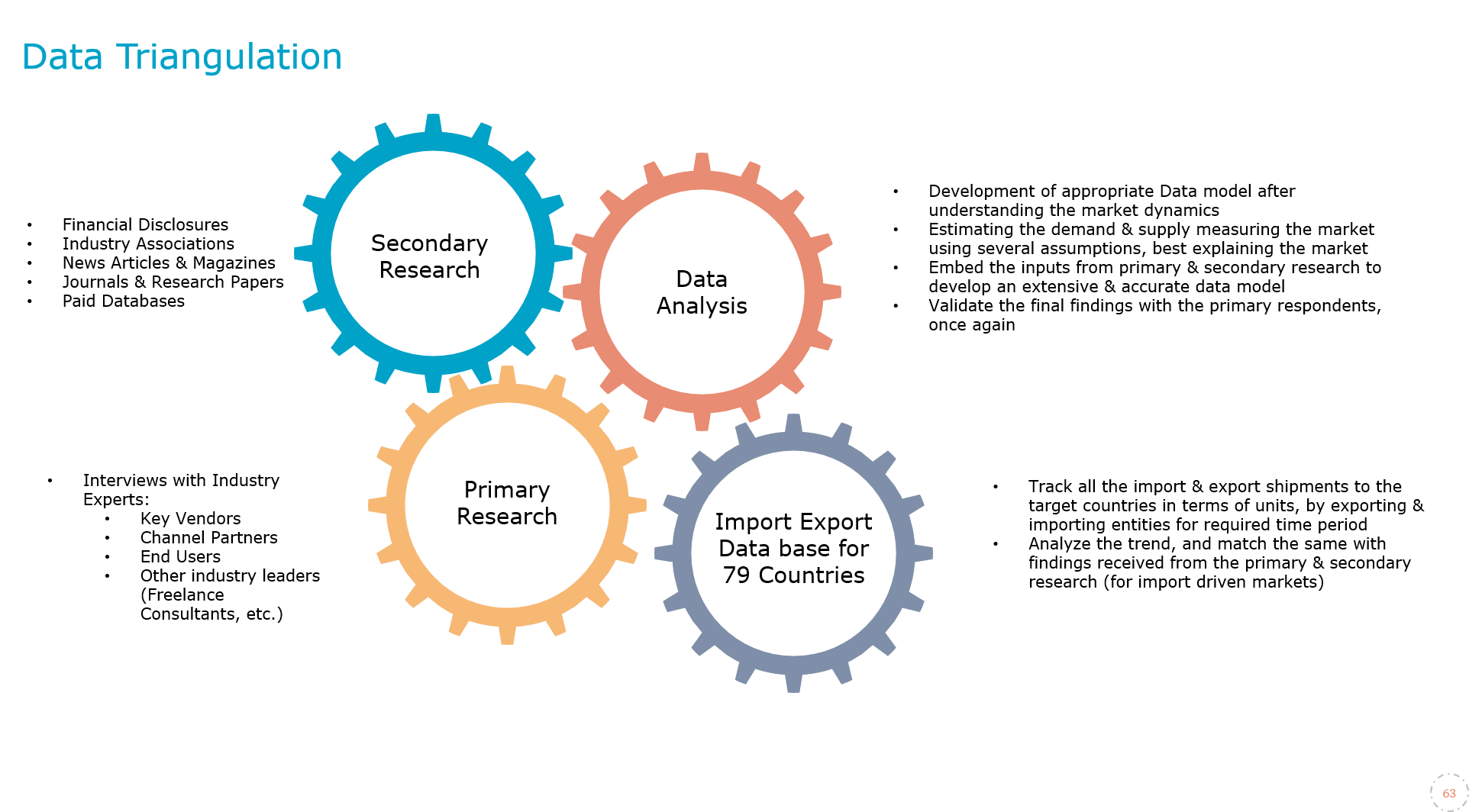
Global Indoor Location Market Research Report: Forecast (2025-2030)
Indoor Location Market Report - By Component (Hardware, Solutions [Indoor Tracking {Asset & People Tracking, Indoor Location Analytics}, Indoor Navigation], Services [Managed Servi...ces, Professional Services {Deployment & Integration, Consulting, Maintenance & Upgrade}]), By Deployment Mode (On-Premise, Cloud), By Connectivity (Bluetooth, WiFi, Ultra-Wideband Technology, Others), By Application (Emergency Management, Sales & Marketing Optimization, Remote Monitoring, Predictive Asset Maintenance, Supply Chain Management, Others), By Vertical (Retail, Transportation & Logistics, Entertainment, Manufacturing, Healthcare, Travel & Hospitality, Others), By Organization Size (Large, Mid & Small-Size), and others Read more
- ICT & Electronics
- Jan 2025
- Pages 211
- Report Format: PDF, Excel, PPT
Market Definition
GPS is usually unreliable in indoor locations, owing to the building's wall that doesn't let satellites provide accurate location information. This very problem creates the need for indoor location-based services. Indoor location systems help attain the precise location of a device or a person in an indoor setting.
Market Insights & Analysis: Global Indoor Location Market (2025-30)
The Global Indoor Location Market size was valued at USD 11.19 billion in 2024 & is projected to reach USD 39.11 billion by 2030. The market is also estimated to grow at a CAGR of around 23.19% during the forecast period, i.e., 2025-30. The rising popularity of smart devices & technologies, growing digitalization trends, the increasing penetration of the internet & smartphones, and the inadequacy of GPS technology in indoor locations are the key aspects aiding in enhancing the market growth. Besides, the growing integration of LBS (Location-based Services), significant advancements in indoor positioning technologies, and the rising focus of businesses on customer engagement & analytics are other prominent factors projected to contribute to influencing the Indoor Location Market share in the following years.
| Report Coverage | Details |
|---|---|
| Study Period | Historical Data: 2020-23 |
| Base Year: 2024 | |
| Forecast Period: 2025-30 | |
| CAGR (2025-2030) | 23.19% |
| Regions Covered | North America: USA, Canada, Mexico |
| Europe: Germany, UK, France, Italy, Spain | |
| Asia-Pacific: China, India, Japan, South Korea, Australia and Others | |
| South America: Brazil | |
| Middle East & Africa: UAE, Saudi Arabia, South Africa | |
| Key Companies Profiled | Zebra Technologies, Inpixon, HPE, MIST Systems, HID Global, Google, Microsoft, Apple, Cisco, Acuity Brands, Centrak, Sonitor, Ubisense, Infsoft, HERE, Indooratlas, Stanley Healthcare, Midmark, Quuppa, Airista Flow, Innerspace, ESRI, SYOOK |
| Market Value (2024) | USD 11.19 Billion |
| Market Value (2030) | USD 39.11 Billion |
Moreover, innovative techniques, such as Wi-Fi positioning, Bluetooth beacons, ultra-wideband (UWB), and magnetic positioning have improved the accuracy & reliability of indoor location systems and thus have expanded their usage cases & applications. Also, these systems can help individuals to navigate through their desired products across the supermarkets. Their application in manufacturing units can help efficiently manage floor levels.
Furthermore, governments of various countries are taking initiatives toward deploying indoor positioning technology for public security & safety. Moreover, indoor location technologies provide businesses with valuable insights into customer behavior, preferences, and traffic patterns within indoor spaces, which enable them to improve customer engagement, optimize store layouts, personalize marketing campaigns, and enhance operational efficiency.
Additionally, various end-user verticals like retail, healthcare, hospitality, and transportation & logistics, among others, have started adopting indoor location technologies. While retailers use them for proximity marketing, personalized offers, and footfall analysis, healthcare facilities utilize them for asset tracking, patient flow management, and staff coordination. On the other hand, transportation hubs & airports leverage indoor positioning systems for efficient navigation & crowd management. Hence, these aspects are projected to play a crucial role in enhancing the Global Indoor Location Market size during 2025-30.

Global Indoor Location Market Driver:
Rising Penetration of Smartphones & Connected Devices – With the rising usage of smartphones & changing consumer buying behaviors, companies are trying to provide location-based applications to engage their customers in indoor spaces. By offering navigation for products, indoor positioning helps retailers improve the overall customer experience, thus making it popular among retailers. Furthermore, rapid advancements in smartphones are also instigating the usage of indoor location systems, which might reduce the need for satellite-based navigation applications in closed urban situations, thus eventually driving the demand graph of the Indoor Location Market.
Global Indoor Location Market Opportunity:
Growing Popularity for RFID Tags in the Retail Sector – Nowadays, it’s the trend for online shopping and home deliveries, and all the companies are trying to make this process smoother and hassle-free. An individual can order any product online and the company then gets it shipped to the nearest local retail store and then it is delivered to the customer. Meanwhile, the customer can track the delivery via the application they have ordered the particular product.
However, if the retailer misplaces the product and the customer gets the shipping notification, it can create a big problem and negative impression for the retailer. Thus, therefore, to avoid such circumstances, RFID technology is adopted, which uses passive tags for detecting the product’s location and are small radiation detectors that require no internal assistance or source. This RFID technology aids retailers, brand owners, as well as customers to have real-time insight into a particular product.
This technology is flourishing throughout the retailers & brand owners as it helps them to deliver things on time and with no mishappenings, hence acting as one of the key opportunistic aspects for the market expansion in the succeeding years.
Global Indoor Location Market Challenge:
Challenges Associated with Accuracy & Scalability of IPS (Indoor Positioning Systems) – Due to the complex & dynamic nature of indoor environments, achieving high accuracy in indoor positioning is challenging. Factors like signal interference, multipath effects, and signal attenuation caused by walls & obstacles can impact the accuracy of indoor location technologies, which, in turn, can result in suboptimal user experiences.
In addition, scaling indoor location technologies to large & complex indoor spaces is another significant encounter limiting the industry growth. Moreover, deploying & maintaining the necessary infrastructure like access points, beacons, or sensors across extensive areas are resource-intensive & time-consuming. Hence, these accuracy & scalability challenges are likely to hinder the widespread adoption of IPS, consequently restraining the growth of the Global Indoor Location Market during 2025-30.
Global Indoor Location Market (2025-30): Segmentation Analysis
The Global Indoor Location Market study by MarkNtel Advisors evaluates & highlights the major trends and influencing factors in each segment. It includes predictions for the period 2025–2030 at the global level. According to the analysis, the market has been further classified as:
Based on Vertical:
- Retail
- Transportation & Logistics
- Entertainment
- Manufacturing
- Healthcare
- Travel & Hospitality
Indoor location systems are widely used in the Transportation & Logistics and Travel & Hospitality sectors. Thus, both segments hold a substantial market share over the past few years. Through its analysis functionalities & real-time tracking solutions, these systems help travelers reach at right locations without any hassle, thereby providing them with pleasant travel experiences.
Besides, these systems are also advantageous in monitoring & managing passenger flow & busy crowds in public places, which, in turn, enhances safety. In addition, other benefits of indoor location systems in the transport industry include route optimization for security guards, queue management, and efficient inventory management.
Moreover, in the logistics industry, indoor positioning enables real-time tracking of employees & goods, process optimization, greater safety of employees, reduced search time, and increased efficiency, thereby making the entire logistic process smoother & faster.
Based on Services:
- Managed Services
- Professional Services
- Deployment & Integration
- Consulting
- Maintenance & Upgrade
Managed Services accounted for the potential share of the Indoor Location Market over the past few years. It offers competitive support & knowledge in implementing & managing the infrastructure & system involved, therefore is considered to play a key role in the indoor location tracking market. Also, to guarantee the smooth operation & optimization of the tracking system, managed service providers provide technical expertise, ongoing support & monitoring capabilities, hence providing upgraded solutions that are crucial for indoor locations or environments. This, in turn, aids in enhancing indoor location tracking system.
Global Indoor Location Market Regional Projection
Geographically, the Global Indoor Location Market expands across:
- North America
- South America
- Europe
- The Middle East & Africa
- Asia-Pacific
North America is estimated to acquire the largest share of the Indoor Location Market during 2025-30. It owes to increasing investments in indoor positioning, coupled with the rapid adoption of technologies like Wi-Fi, ultra-wideband, and BLE (Bluetooth Low Energy) to enable accurate & efficient indoor location tracking. In addition, the ever-increasing demand for proximity-based solutions in the retail sector and the rising usage of mobile media to promote products are other crucial aspects contributing to the North America Indoor Location Market growth.
With the strong presence of technology companies & research institutions that drive innovations, the US has been at the forefront of remarkable advancements in the field of indoor location technologies. Various industries like retail, healthcare, transportation, and logistics adopted IPS & related technologies at the early stage, which provided the regional market players with a competitive advantage and allowed them to gain expertise & establish a strong market presence.
Moreover, the retail sector in North America is one of the largest & most advanced in the world. Several retailers across the region have recognized the potential of indoor location technologies to enhance customer experiences, optimize store layouts, and enable targeted marketing campaigns, i.e., driving the widespread adoption of indoor location solutions in the retail sector.
Global Indoor Location Industry Recent Developments
- March 2024: A global leader in real-time location services (RTLS), Arista declared that it was recognized as a "Leader" in the 2024 Magic Quadrant for Indoor Location Services by Gartner Inc. The company is devoted to increasing the value of RTLS investments by empowering customer workflows with location insights.
- January 2023: Apple Business Connect was introduced by Apple. A new tool, Apple Business Connect was gained by Apple Maps: It will now allow business owners to update and manage their information on the platform.
Gain a Competitive Edge with Our Global Indoor Location Market Report
- Global Indoor Location Market Report by MarkNtel Advisors provides a detailed & thorough analysis of market size, growth rate, competitive landscape, and key players. This comprehensive analysis helps business organizations to gain a holistic understanding of market dynamics & make informed decisions.
- This report also highlights current market trends & future projections, allowing business organizations to identify emerging opportunities & potential challenges. By understanding market forecasts, companies can align their strategies & stay ahead of the competition.
- Global Indoor Location Market Report aids in assessing & mitigating risks associated with entering or operating in the market. By understanding market dynamics, regulatory frameworks, and potential challenges, business organizations can develop strategies to minimize risks & optimize their operations.
Frequently Asked Questions
- Introduction
- Product Definition
- Research Process
- Assumptions
- Market Segmentation
- Preface
- Executive Summary
- Impact of COVID-19 on Global Indoor Location Market
- Global Indoor Location Market Analysis, 2019-2030F
- Market Size & Analysis
- Revenues (in USD Million)
- Market Share & Analysis
- By Component
- Hardware
- Solutions
- Indoor Tracking
- Asset & People Tracking
- Indoor Location Analytics
- Indoor Navigation
- Indoor Tracking
- Services
- Managed Services
- Professional Services
- Deployment & Integration
- Consulting
- Maintenance & Upgrade
- By Deployment Mode
- On Premises
- Cloud
- By Connectivity
- Bluetooth
- WiFi
- Ultra Wideband Technology
- Others
- By Application
- Emergency Management
- Sales & Marketing Optimization
- Remote Monitoring
- Predictive Asset Maintenance
- Supply Chain Management
- Others
- By Vertical
- Retail
- Transportation & Logistics
- Entertainment
- Manufacturing
- Healthcare
- Travel & Hospitality
- Others
- By Organization Size
- Large
- Mid-Size & Small
- By Region
- North America
- South America
- Europe
- Middle East & Africa
- Asia Pacific
- By Competitors
- Competition Characteristics
- Market Share & Analysis
- Competitive Metrix
- By Component
- Market Size & Analysis
- North America Indoor Location Market Analysis, 2019-2030F
- Market Size & Analysis
- Revenues (in USD Million)
- Market Share & Analysis
- By Component
- By Deployment Mode
- By Connectivity
- By Application
- By Vertical
- By Organization Size
- By Country
- The US Indoor Location Market Analysis, 2019-2030F
- Market Size & Analysis
- Revenues (in USD Million)
- Market Size & Analysis
- Canada Indoor Location Market Analysis, 2019-2030F
- Market Size & Analysis
- Revenues (in USD Million)
- Market Size & Analysis
- Mexico Indoor Location Market Analysis, 2019-2030F
- Market Size & Analysis
- Revenues (in USD Million)
- Market Size & Analysis
- The US Indoor Location Market Analysis, 2019-2030F
- Market Size & Analysis
- South America Indoor Location Market Analysis, 2019-2030F
- Market Size & Analysis
- Revenues (in USD Million)
- Market Share & Analysis
- By Component
- By Deployment Mode
- By Connectivity
- By Application
- By Vertical
- By Organization Size
- By Country
- Brazil Indoor Location Market Analysis, 2019-2030F
- Market Size & Analysis
- Revenues (in USD Million)
- Market Size & Analysis
- Brazil Indoor Location Market Analysis, 2019-2030F
- Market Size & Analysis
- Europe Indoor Location Market Analysis, 2019-2030F
- Market Size & Analysis
- Revenues (in USD Million)
- Market Share & Analysis
- By Component
- By Deployment Mode
- By Connectivity
- By Application
- By Vertical
- By Organization Size
- By Country
- Germany Indoor Location Market Analysis, 2019-2030F
- Market Size & Analysis
- Revenues (in USD Million)
- Market Size & Analysis
- France Indoor Location Market Analysis, 2019-2030F
- Market Size & Analysis
- Revenues (in USD Million)
- Market Size & Analysis
- The UK Indoor Location Market Analysis, 2019-2030F
- Market Size & Analysis
- Revenues (in USD Million)
- Market Size & Analysis
- Italy Indoor Location Market Analysis, 2019-2030F
- Market Size & Analysis
- Revenues (in USD Million)
- Market Size & Analysis
- Spain Indoor Location Market Analysis, 2019-2030F
- Market Size & Analysis
- Revenues (in USD Million)
- Market Size & Analysis
- Germany Indoor Location Market Analysis, 2019-2030F
- Market Size & Analysis
- Middle East & Africa Indoor Location Market Analysis, 2019-2030F
- Market Size & Analysis
- Revenues (in USD Million)
- Market Share & Analysis
- By Component
- By Deployment Mode
- By Connectivity
- By Application
- By Vertical
- By Organization Size
- By Country
- South Africa Indoor Location Market Analysis, 2019-2030F
- Market Size & Analysis
- Revenues (in USD Million)
- Market Size & Analysis
- Israel Indoor Location Market Analysis, 2019-2030F
- Market Size & Analysis
- Revenues (in USD Million)
- Market Size & Analysis
- South Africa Indoor Location Market Analysis, 2019-2030F
- Market Size & Analysis
- Asia Pacific Indoor Location Market Analysis, 2019-2030F
- Market Size & Analysis
- Revenues (in USD Million)
- Market Share & Analysis
- By Component
- By Deployment Mode
- By Connectivity
- By Application
- By Vertical
- By Organization Size
- By Country
- China Indoor Location Market Analysis, 2019-2030F
- Market Size & Analysis
- Revenues (in USD Million)
- Market Size & Analysis
- India Indoor Location Market Analysis, 2019-2030F
- Market Size & Analysis
- Revenues (in USD Million)
- Market Size & Analysis
- South Korea Indoor Location Market Analysis, 2019-2030F
- Market Size & Analysis
- Revenues (in USD Million)
- Market Size & Analysis
- Japan Indoor Location Market Analysis, 2019-2030F
- Market Size & Analysis
- Revenues (in USD Million)
- Market Size & Analysis
- Australia Indoor Location Market Analysis, 2019-2030F
- Market Size & Analysis
- Revenues (in USD Million)
- Market Size & Analysis
- China Indoor Location Market Analysis, 2019-2030F
- Market Size & Analysis
- Global Indoor Location Market Regulations, Policies, Product Benchmarks
- Global Indoor Location Market Trends & Insights
- Global Indoor Location Market Dynamics
- Drivers
- Challenges
- Global Indoor Location Market Hotspot & Opportunities
- Global Indoor Location Market, Competition Outlook
- Competition Matrix
- Application Portfolio
- Brand Specialization
- Target Markets
- Target Applications
- Research & Development
- Strategic Alliances
- Strategic Initiatives
- Company Profiles (Business Description, Product Offering, Strategic Alliances or Partnerships, etc.)
- Zebra Technologies
- Inpixon
- HPE
- MIST Systems
- HID Global
- Microsoft
- Apple
- Cisco
- Acuity Brands
- Centrak
- Sonitor
- Ubisense
- Infsoft
- HERE
- Indooratlas
- Stanley Healthcare
- Midmark
- Quuppa
- Airista Flow
- Innerspace
- ESRI
- SYOOK
- Competition Matrix
- Disclaimer
MarkNtel Advisors follows a robust and iterative research methodology designed to ensure maximum accuracy and minimize deviation in market estimates and forecasts. Our approach combines both bottom-up and top-down techniques to effectively segment and quantify various aspects of the market. A consistent feature across all our research reports is data triangulation, which examines the market from three distinct perspectives to validate findings. Key components of our research process include:
1. Scope & Research Design At the outset, MarkNtel Advisors define the research objectives and formulate pertinent questions. This phase involves determining the type of research—qualitative or quantitative—and designing a methodology that outlines data collection methods, target demographics, and analytical tools. They also establish timelines and budgets to ensure the research aligns with client goals.
2. Sample Selection and Data Collection In this stage, the firm identifies the target audience and determines the appropriate sample size to ensure representativeness. They employ various sampling methods, such as random or stratified sampling, based on the research objectives. Data collection is carried out using tools like surveys, interviews, and observations, ensuring the gathered data is reliable and relevant.
3. Data Analysis and Validation Once data is collected, MarkNtel Advisors undertake a rigorous analysis process. This includes cleaning the data to remove inconsistencies, employing statistical software for quantitative analysis, and thematic analysis for qualitative data. Validation steps are taken to ensure the accuracy and reliability of the findings, minimizing biases and errors.

4. Data Forecast and FinalizationThe final phase involves forecasting future market trends based on the analyzed data. MarkNtel Advisors utilize predictive modeling and time series analysis to anticipate market behaviors. The insights are then compiled into comprehensive reports, featuring visual aids like charts and graphs, and include strategic recommendations to inform client decision-making









